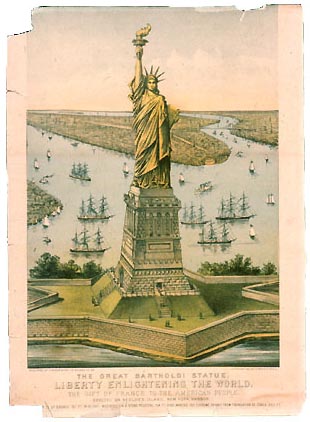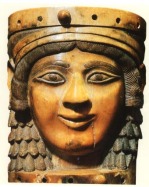The Olympic Torch
Posted on: September 17, 2008
Everyone knows the Olympic torch, but do we know what symbolism is behind this symbol?
The torch relay of modern times which transports the flame from Greece to the various designated sites of the games had no ancient precedent and was introduced by Carl Diem, with the support of Joseph Goebbels, at the controversial Berlin Olympics as a means to promote Nazi ideology.
On a visit to Greece for an Olympic conference in 1934, Diem and Lewald imagined a new symbolic pageant that would cloak the German games with the ancient Greek mantle: the transit of a lit Olympic flame from Greece to Berlin by a relay of torch-bearing runners. While the relay is sometimes believed to be an ancient tradition, it was in fact the wholly modern creation of Lewald and Diem: the ancient games included a ritual flame commemorating the theft of fire from the gods by Prometheus, but no torch relay.
- On June 30, 1936,the first torch-flame was kindled in Olympia, Greece, in the ruins of the Temple of Hera, by 15 robed “virgins,” using a concave mirror focusing the sun’s rays, all under the supervision of a “high priestess.” It was carried to the Acropolis in Athens for a special invocation, and then relayed along the 3,422-kilometer distance to the Olympic stadium in Berlin by an equal number of young Aryan-looking runners, each of whom took the flame a single kilometer.
- June 30, 1936: Siegfried Eifrig carries the Olympic torch to light a ceremonial altar in the center of Berlin, before the flame is carried into the Olympic stadium.
- June 30, 1936: Siegfried Eifrig carries the Olympic torch to light a ceremonial altar in the center of Berlin, before the flame is carried into the Olympic stadium.

On its way, the flame passed through Bulgaria, Yugoslavia, Hungary, Austria and Czechslovakia; those countries, and Greece itself, would all be under Nazi domination within ten years.The event was filmed by Hitler’s favorite director, Leni Riefenstahl, and branded with the giants of German industry: the lighting-mirrors were made by the Zeiss corporation, and the torches themselves, fueled with magnesium to prevent them from going out in bad weather, were constructed by Krupp, the huge steel and munitions conglomerate that armed Germany for both world wars.
The tradition of a torch relay from Greece to the host country of the Olympic games has been continued at every Olympiad since then. Even the ritual kindling of the flame with a mirror on the grounds of the Temple of Hera remains virtually intact as the official method of starting the relay.
The Statue of Liberty.

The Statue of Liberty was presented in 1884 as a gift from the French Grand Orient Temple Masons to the Masons of America in celebration of the centenary of the first Masonic Republic. She is holding the Masonic “Torch of Enlightenment”. Also referred to back in the 1700’s by the Illuminati Masons as the “Flaming Torch of Reason”. The Torch represents the “Sun” in the sky. The Statue of Liberty’s official title: “Liberty Enlightening the World”. Libertas, is the false symbol.
The torch is also visible on the statue of liberty. The statue is said to be modeled after Isis and Juno, Juno was the conqueror of the heavens. She was the goddess of the pure light, like the light of the moon. Although it’s sculptor Bartholdi visited Egypt for inspiration, it is said that she was patterned after the goddess, Libertas, the Roman personification of freedom. Libertas is usually portrayed as a matron with a laurel wreath or a pileus.
Ishtar, the hidden symbol.

There is one problem. The statue of liberty doesn not fully mimic the Goddes Libertas, only the face looks the same, and the torch isn’t present at all. We now know who Libertas is, but there is another Goddess called Ishtar. Ishtar was adorned with a crown of seven spikes. She is a goddess of fertility, love and war. In Roman mythology, Juno was the equivalent mythical character to Hera, and Hera the same as Ishtar. In the Babylonian pantheon, she “was the divine personification of the planet Venus”. Ishtar was above all associated with sexuality: her cult involved sacred prostitution; her holy city Erech was called the “town of the sacred courtesans”; and she herself was the “courtesan of the gods”. Ishtar was the daughter of Sin or Anu. The idea is that the Egyptian goddess Isis who nurses Horus, and the Babylonian goddess Ishtar who nurses the god Tammuz, are one and the same. She is also named as the Whore of Babylon in the Bible and the reason for free masons to choose her as a secret symbol, which means something different than we are led to believe.
IMPORTANT: Ishtar was equated by the Greeks with either Hera or Aphrodite. And we just learned that the Olympic torch is set ablaze in the Temple of Hera!
Babylonian scriptures called her the “Light of the World, Leader of Hosts,
Opener of the Womb, Righteous Judge, Lawgiver,
Goddess of Goddesses, Bestower of Strength,
Framer of All decress, Lady of Victory,
Forgiver of Sins, Torch of Heaven and Earth.
This is part of a prayer towards Ishtar:
Who art exalted and firmly fixed, O valiant Ishtar, great is thy might!
O brilliant one, torch of heaven and earth, light of all peoples,
O unequaled angry one of the fight, strong one of the battle,
O firebrand which is kindled against the enemy, which brings about the destruction of the furious,
O gleaming one, Ishtar, assembler of the host,O deity of men, goddess of women, whose designs no one can conceive.
And so it’s easy to imagine where the torch originated from isn’t it? And finally, here is Hera (Ishtar) notice the resemblance between the statue of liberty.

Leave a comment